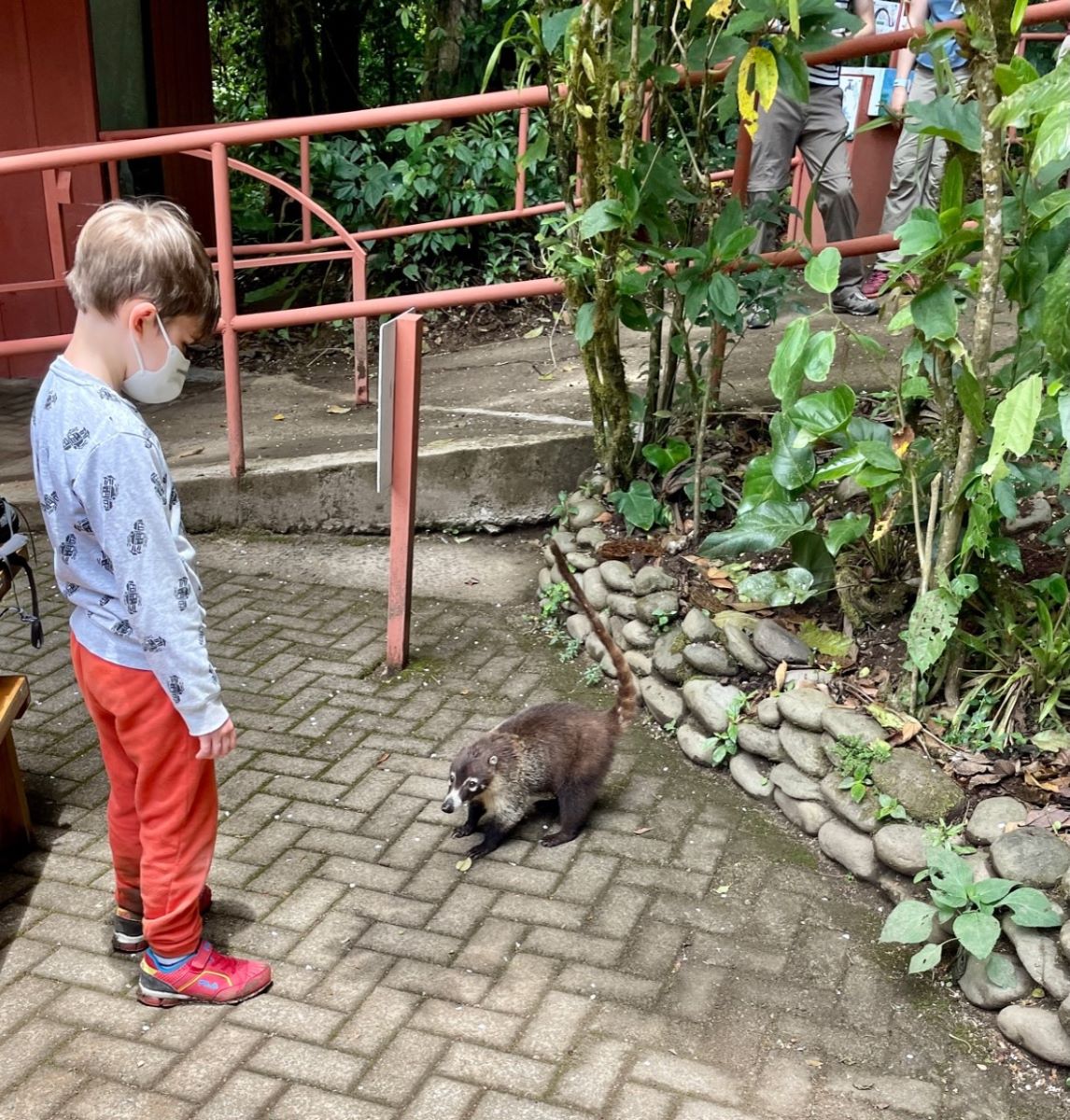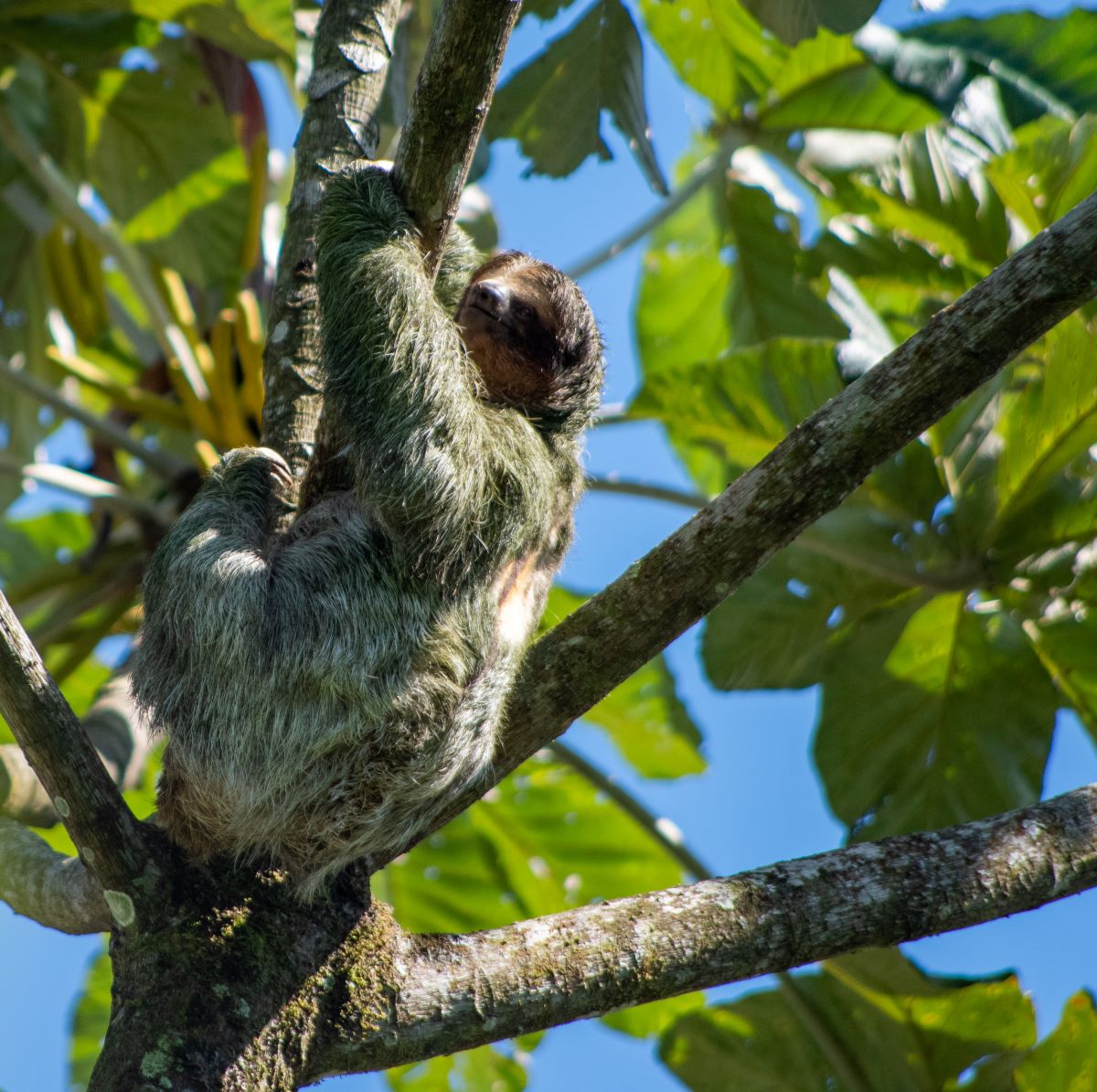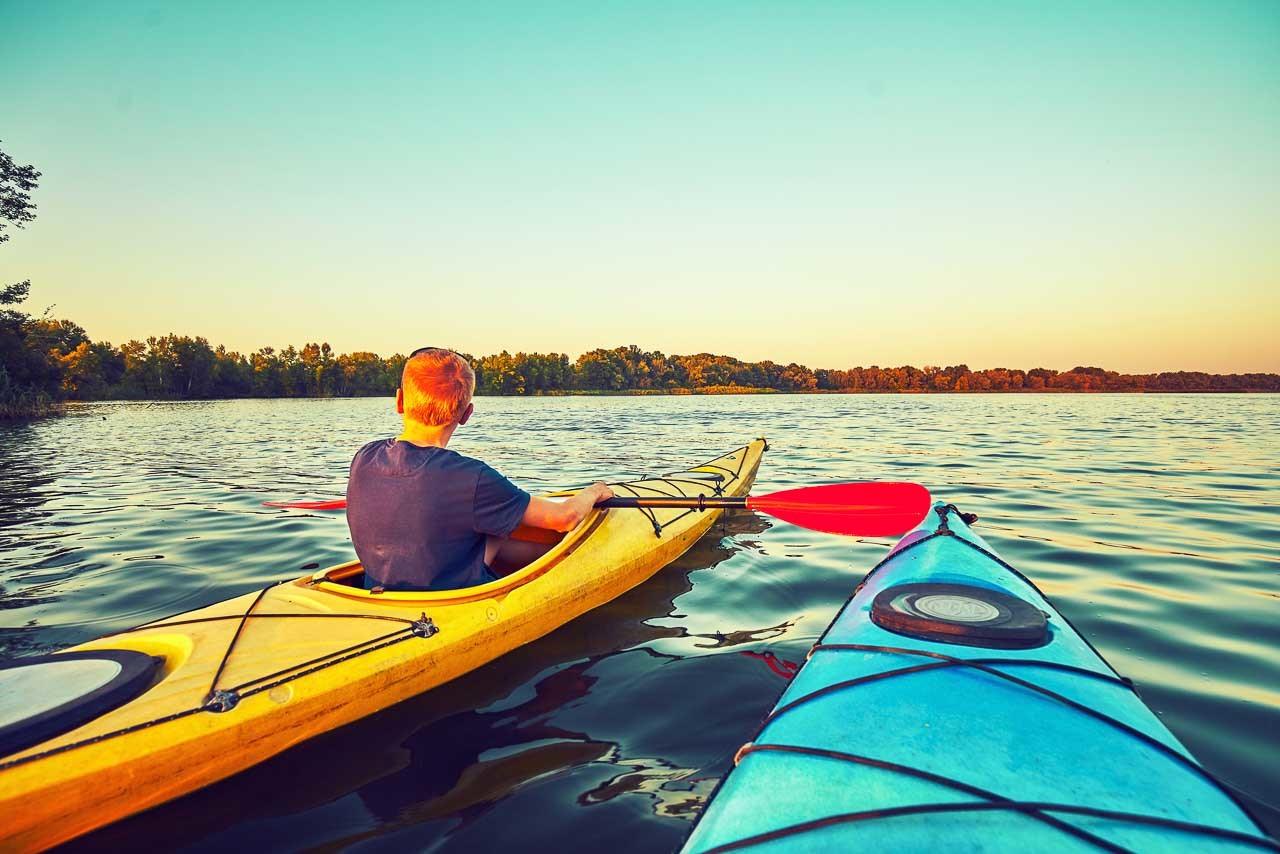Discovering Costa Rica Wildlife | Wander With Wonder
8 min read
Table of Contents
A road trip in Costa Rica is the ideal way to explore the beautiful country and its wildlife. Read on for our experiences with Costa Rica wildlife on an unforgettable girls’ road trip.
Road trips are all about variety. My friend Connie and I spent three weeks traversing the cities and the countryside of Costa Rica. Along the way, we encountered a variety of Costa Rica’s wildlife: unique birds, animals, and reptiles. Some were deadly, and others were docile and worthy of a cuddle.
Costa Rica’s Wildlife in Monteverde
The first unusual animal sightings were in the Monteverde Cloud Forest Biological Reserve, a quick 11-minute drive from where we stayed at Los Pinos Cabins and Gardens. The Forest, located on the Pacific and Atlantic slopes of the Continental Divide, sits at about 5000 feet above sea level. The Biological Reserve, engulfed in the clouds, is a welcome retreat offering a cool escape from most of Costa Rica’s hot tropical climate.
When entering the reserve, I recommend looking at the placards in the entrance building. A quick look at the photos and descriptions of the local wildlife helps you spot and identify the residents during your exploration.
Our first sighting was near the reserve entrance, where a young boy spotted a coatimundi. This animal is similar to a raccoon. Walking along, we soon caught a quick glimpse of an agouti, a relative of the guinea pig but much bigger.

A little boy checking out a coatimundi. Photo by Tracy Ellen Beard
The Forest
The reserve is a stunning place to hike, full of new sights and sounds and ablaze with beautiful hues. Throughout our four-mile trek, we heard the roar of waterfalls cascading down the mountainsides and crashing onto the rocks below. We often stopped to listen to the scurry of small animals scampering through the brush. Chartreuse-colored ferns unfurled throughout the forest, moss clung to the trees in variegated shades of green, and the new growth on the tree tips added shades of lime to this cornucopia of forest greenery. Alight with color, bromeliad buds burst into bright, bold flowers, and with 425 species of birds, the air was filled with song.
Just meters from the exit, I encountered a Parrot snake. It was lying on the trail, and I nearly stepped on it. It slithered off the path and into a bush. I must have made it angry because he stuck his head out and hissed as we walked past. The Parrot snake is mildly venomous but not enough to affect humans and therefore is considered non-venomous.
Wildlife Near Costa Rica’s La Fortuna Volcano
We stayed at Nayara Springs, a stunning adult-only 5-star resort. The resident animals are wild and live within the resort property. After relaxing and settling in, we met Anna, the resort tour guide.

Red-eyed tree frog. Photo by Tracy Ellen Beard
Anna walked us around in the dark and pointed out various frogs, including the Red-eyed tree frog, a mother and baby monkey, a baby sloth and its mother, and an armadillo.

Howler monkey. Photo by Tracy Ellen Beard
The Sloth Watching Trail is a Fabulous Place to See Costa Rica’s Wildlife
Connie’s main objective on this trip was to get a good look at a sloth or two, so the following day we headed down the road to the Sloth Watching Trail. More than a dozen sloths live nearby, so spotting them is common. Although we did glimpse the baby sloth and its mother at Nayara Springs, this brief encounter was insufficient for Connie as they were concealed within the trees.
With the help of our guide, Jhonny, we saw several sloths at the Sloth Watching Trail. Jhonny had a telescope and helped us take some great photos.

A sloth at Sloth Watching Trail. Photo by Tracy Ellen Beard
After we walked through the “park,” he took us to an area where we found the illustrious Blue-jeans Frog, also known as the Strawberry Poison-dart Frog. This frog is one of the most popular amphibians in the region, and although listed as one of the poisonous frogs, the blue-jeans frog’s pumiliotoxins are not lethal to humans.

Blue-jeans frog or Strawberry Poison-dart frog. Photo by Tracy Ellen Beard
Mistico Arenal Hanging Bridges Park is Home to Many of Costa Rica’s Wildlife
After an hour and a half of sloth scouting, we drove to Mistico Park Arenal Hanging Bridges. The trail here meandered up and down throughout the park with traditional and long-hanging bridges. We rounded a corner and found a group of kids gathered. A venomous Eyelash Viper was coiled up on the horizontal fence just three feet in front of us.

Eyelash viper on the fence railing. Photo by Tracy Ellen Beard
Uvita
Part of the adventure on this trip was driving. It was a five-and-a-half-hour drive from La Fortuna to Uvita on the coast. Some of the steepest road grades in the states are six or seven percent, but in Costa Rica, the inclines and descents can be as high as 14 percent. It is like riding on a roller coaster, and as you slowly reach the top, you wonder if you will drop off into the abyss on the other side.
Although we were staying in Uvita, we booked a snorkeling trip leaving out of Sierpe the following day. We got up bright and early and drove an hour to Sierpe to join the snorkeling trip with La per la del Sur. Isaac was our guide. Riding the boat through the mangroves was exhilarating, and our captain was an expert driver. We stopped to look closely at a boa constrictor dangling in the trees above the water. These were brackish waters and home to many American crocodiles and Spectacled Caimans. We left the river and headed out into the ocean.
It was a wild ride getting over the waves at the delta, or mouth of the river. Once out, we made our way toward Canas Island. We snorkeled for a couple of hours and saw parrot fish, a sea turtle, yellow and black striped fish, needle nose fish, and a small black and white spotted puffer fish. On the ride back, we saw spider monkeys and two sloths.

Spider monkey. Photo by Tracy Ellen Beard
The following day, we returned up the coast from Uvita and took the car on the ferry to the peninsula.
Montezuma
Montezuma is a veritable backpacker paradise. The only animals we found on the southern tip of this peninsula were bugs, lots and lots of bugs, and mosquitos.
Punta Islita
We left Montezuma and took a shortcut to our hotel, Punta Islita Guanacaste, on Highway 160; it was beautiful. We drove past quaint, manicured homes and gardens. In the morning, we went to have breakfast at the onsite restaurant Alma. The restaurant rests next to the pool perched on the hillside overlooking the Pacific Ocean. Dining is alfresco; patrons can sit underneath the covered portion or outside by the pool.
The setting is gorgeous, and Connie and I enjoyed our coffee while watching two stunning McCaws eating fruit on the low branches of a tall deciduous tree on the pool’s north side.

One of two macaws in the tree at Punta Islita. Photo by Tracy Ellen Beard
The next day we were scheduled to go kayaking down the OSO River. It was a bumpy ride in the back of the van, and when we arrived at the riverbank, I was a bit disconcerted.
The river was brown and murky. This brackish water looked like the perfect place for lurking crocs. It is one thing to be in a motorized boat with the beasts in the water and quite another to paddle in a kayak. Ronald, our guide, assured us that any dangerously large reptiles in the area would be out sunning themselves on the shore during the day.

Kayaking the OSO River while keeping an eye out for crocodiles. Photo by Tracy Ellen Beard
Our kayak adventure took us through black and red mangroves, and Ronald guided us down to the mouth of the river, where it met the ocean. Crossing the river near the mouth was scary. We exited our kayaks and walked on the beach before heading back upstream, where the loud screaming of the local howler monkeys greeted us.
Domestic Critters
The following day we met with two other people to go horseback riding with Ronald as our guide again. The other riders were a couple from San Francisco. The man was a hoot. He told Ronald he was a very experienced rider, and yet he really struggled to get onto the relatively short horse. He could not control his mount in the least. Throughout the entire trip, he kept yelling Whoa and No. His wife was reticent, Ronald couldn’t help but laugh, and Connie and I giggled the whole trip.

Connie and her trusted steed. Photo by Tracy Ellen Beard
Our last stop was a trip up the peninsula’s western side to the Four Seasons Resort Costa Rica at Peninsula Papagona. Our animal interactions during this segment began in the sea. We decided to go for a swim, and within ten minutes, Connie got stung by a jellyfish. The lifeguard at the beach brought her some vinegar to rub on her arm, which she said eventually took away the fire ant bite feeling.
We joined the golf course excursion, Tour of the Giants, in the afternoon. It was a blast, and the views along the course were outstanding. The sixth hole is the signature hole boasting incredible bay views from the tee. Connie drove like a maniac. In the states, golf course trails and roads typically have a maximum incline or decline percentage of about 6 or 7 %. In Costa Rica, many places break a 13% grade. We had great fun on this “golf cart roller coaster” and saw a few howler monkeys in the trees.

Howler monkey at the Four Seasons. Photo by Tracy Ellen Beard
Articles Related to Exploring Central America
An End Costa Rica’s Wildlife Tour
All good things must come to an end. It was time to fly home, and our encounters with the wildlife in Costa Rica were over. Everything about this eclectic adventure was new and exciting. Let Wander With Wonder be your guide when planning a trip to Central America or looking for a destination for your adventure travels or road trip.

.







